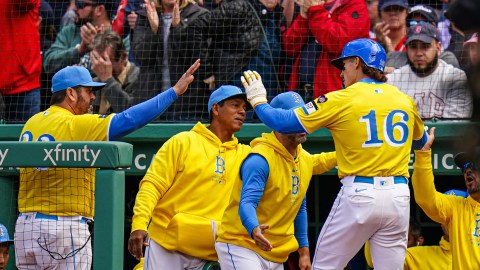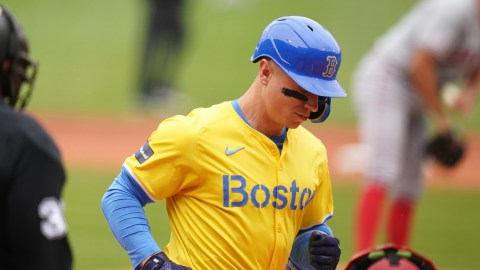As the Red Sox stretched as a team along the third-base line before a recent game at Yankee Stadium, catcher Jason Varitek took a moment to joke around with designated hitter David Ortiz.
The daily stretching session can become a good time for the players to socialize and maybe even rib one another. But none treat it as a joke.
In fact, it’s that everyday session that helps get Varitek prepared for the rigors of his demanding job.
“That’s extremely important to me in my position because you spend a lot of time tightening up those muscles that help you become more elastic,” Varitek said.
The 38-year-old Varitek has seen some alterations to team stretching procedures over the years, but his focus on the task remains the same. It’s an imperative part of the process of getting set to squat repeatedly in a three-hour span.
That focus has actually allowed him to ward off Father Time, in a way.
“At my age, I’m more flexible than I was in my mid-20s,” he said.
That’s a credit to stretching.
The Red Sox’ team stretch involves a pattern. Taking their instruction from strength and conditioning coach David Page, the players do “open-the-gate” and “close-the-gate” maneuvers, which involve thrusting the legs up and out or up and in while stepping forward. They then employ high kicks, a form of sideways jumping jacks, run backward and the age-old karaoke warm-up, to name a few of the exercises.
The daily grind of playing the catcher position certainly involves a little more.
Varitek often begins his routine with an active stretch, which does not use any other body part or anything stationary to act as resistance. For example, a leg could be stretched by holding it up and keeping it in place using only the leg muscles.
Later, often after the game or after a workout when his muscles are warm, he is given a cooling down stretch with a trainer, otherwise known as a static stretch.
“[Staying fit] doesn’t happen from standing there and doing nothing,” Varitek said. “It makes me more pliable that way.”
Mark Dynan, PT, DPT, OCS is a board certified clinical specialist in orthopedic physical therapy for Beth Israel Deaconess Healthcare Lexington. He couldn’t agree more with the importance of Varitek’s stretching regimen.
“We have several leg muscles [calf, hamstring, hip flexors] that slowly get tighter over the years if they are not stretched on a regular basis,” Dynan explained, adding that it is particularly important to stretch regularly for a catcher, since they spend so much time in a squatting position with his knees and hips fully bent.
“When the Red Sox are in the field, these leg muscles are in a shortened position for 10-15 minutes while he is catching. Then he needs to be prepared to come up to bat, hit the ball, and sprint around the bases,” he added. “If he were not doing the warming up and stretching that he does, he would have ended up on the disabled list with a ‘pulled muscle’ several times — something our weekend warriors that watch Jason from their couch know something about.”
The 2010 season has seen Varitek’s role reduced, as he plays backup to regular starter Victor Martinez. It has not affected the captain’s production (he had seven home runs in his first 22 games) and, in fact, may help him keep an eye on the aches and pains a bit more.
“It allows me to maintain workouts more,” Varitek said of the increased off days. “I’ve got to run more, I’ve got to cardio more, I’ve got to stretch out, I’ve got to do my catchers drills.”
Amid all that, he still has time to joke around with his teammates. It just might have to come during the daily stretching.


